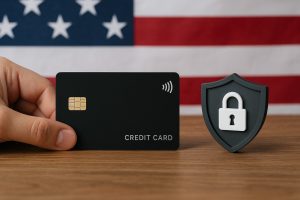In today’s interconnected world, securing international digital accounts has become paramount. With the increasing reliance on online services, ensuring the safety of your virtual presence is more critical than ever. In this blog post, we will explore essential information to safeguard your digital accounts effectively.
From understanding potential threats to adopting best practices, we’ll cover everything you need to know to protect your international digital profiles. Whether you are a digital nomad, frequently traveling for business, or managing global assets, these insights are crucial for maintaining a secure online experience.
Understanding the risks to your digital profiles

The virtual landscape is fraught with various security threats that can compromise your digital profiles. Cybercriminals constantly devise new methods to breach accounts, steal personal information, and cause financial harm. Understanding these risks is the first step toward protecting yourself.
Phishing attacks, malware, and brute force attacks are among the most common strategies used by hackers to gain unauthorized access to your online accounts. It’s essential to recognize the signs of these threats and take proactive measures to defend against them.
Moreover, the global nature of the internet means that threats can come from anywhere, making international digital accounts particularly vulnerable. By staying informed and vigilant, you can minimize these risks.
Recognizing phishing attempts
Phishing is a deceptive tactic used by cybercriminals to trick individuals into revealing sensitive information, such as login credentials or financial details. These attacks often come in the form of fraudulent emails or messages that appear legitimate.
To guard against phishing, always verify the authenticity of the sender before clicking on any links or providing personal information. Look for telltale signs such as suspicious domains, poor grammar, and urgent requests.
Using email filters and security software can also help identify and block phishing attempts. Ensuring that your staff and family members are educated about the dangers of phishing is equally important. Regular training sessions can keep everyone informed about the latest tactics used by attackers.
Preventing malware infections
Malware is malicious software designed to infiltrate and damage your devices and accounts. Common types of malware include viruses, ransomware, and spyware, each posing unique threats to your digital security. To protect against malware, always keep your software and operating systems updated. Use reputable antivirus programs and conduct regular scans to detect and remove potential threats.
Avoid downloading software or files from untrustworthy sources, as these can often be carriers of malicious code. Implementing a robust backup strategy is also vital. Regular backups ensure that you can quickly recover your data in the event of a malware infection, minimizing the impact on your digital activities.
Implementing strong security practices
Adopting robust security practices is essential for safeguarding your global digital accounts. While no system is entirely foolproof, implementing multiple layers of protection can significantly enhance your overall defense.
Start by using complex, unique passwords for each of your online accounts. Combine upper and lower case letters, numbers, and special characters to create strong passwords. Avoid using easily guessable information such as birthdays or common words.
Furthermore, enable two-factor authentication (2FA) wherever possible. 2FA adds an extra layer of security by requiring a second form of verification, such as a text message code, in addition to your password. This makes it much harder for hackers to gain unauthorized access.
Using password managers
Keeping track of numerous complex passwords can be challenging, which is where a password manager comes in handy. These tools securely store your passwords and automatically fill them in when needed, reducing the risk of password-related vulnerabilities. Password managers can also generate strong, random passwords for each of your accounts, ensuring that you’re not reusing the same password across multiple platforms.
This practice greatly enhances your digital security and simplifies password management. When choosing a password manager, opt for reputable options that offer strong encryption and a user-friendly interface. Regularly update your saved passwords to maintain optimal security.
Monitoring your digital accounts
Regular monitoring of your online accounts allows you to detect any unusual activities promptly. Many digital services offer notification settings that alert you to login attempts, password changes, and other significant actions. Set up these alerts to receive immediate notifications about potential security breaches.
Reviewing account activity logs can help you identify and respond to suspicious behavior quickly. If you notice any unusual activity, take immediate action by changing your passwords and securing your accounts. This proactive approach minimizes the damage that could be caused by unauthorized access.



